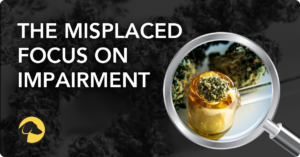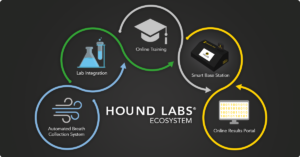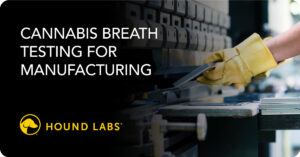
How and When to Use Post-Hire Testing
Every workplace has different safety and personnel needs, and drug testing policies should cater to those different business needs. I wrote a blog this summer about pre-access testing and the benefits it has for many workplaces, and now I want to give an overview of yet another type of drug testing that can be used as cannabis legalization and use continue to spread: onboarding testing.
WHAT IS ONBOARDING TESTING?
When people think about getting drug tested for work, one of the most common scenarios they think of is pre-employment drug testing – after a conditional offer of employment, they must pass a drug test that screens for multiple drugs, usually in urine. Although it continues to be the most often used reason for testing, pre-employment urine testing has become an especially contested topic when it comes to cannabis, which only causes impairment for a few hours but can stay in urine for weeks.
We suggest businesses consider a nuance to their drug testing policy that provides all the benefits of pre-employment testing but accommodates legal, off-duty adult use of cannabis products. “Onboarding testing,” when updating or supplementing an existing drug testing program, balances a company’s use of drug testing as an important part of their risk mitigation strategy while accepting the fact that more and more people can use cannabis legally during their personal time. In this context, onboarding testing means testing all employees within a predetermined period after they join the company, and then throughout their tenure as outlined in a company’s drug testing program. This type of testing promotes safety because it detects and deters on-the-job use throughout a person’s employment continuum – not just before they start the job, when their use may have no impact on their work performance. It also promotes equity because a company tests all employees – not only employees in safety-sensitive or entry-level positions.
HOW TO USE ONBOARDING TESTING
Onboarding testing can be combined with any other type of testing – pre-employment, pre-access, and others – but should always include two main elements. First, it should follow a standard protocol across positions to promote fairness. To ensure equal enforcement, policies should apply to every employee at the company regardless of salary, title, or company tenure – not just safety-sensitive or entry-level workers. If, however, a company wishes, it can apply non-discriminatory testing for certain groups of employees based on their position. For instance, a company may test 100% of employees in the period immediately after hire and then could test 100% of safety-sensitive employees and 50% of non-safety-sensitive employees throughout the year.
Second, it should use a drug test that identifies recent cannabis use to ensure fairness. No employee should be at risk of negative employment action based on legal cannabis use during their personal time. Cannabis breath testing technology only identifies use within the last few hours when it may be relevant to job safety and performance. This means minimal stress, minimal lost work time, and maximum fairness to employees who desire and deserve to keep their personal lives private.
FINAL THOUGHTS
Combining onboarding testing with a cannabis breathalyzer that only identifies recently used cannabis offers a fair way to continue to benefit from the safety associated with drug testing while allowing employees to maintain their privacy related to their personal choices about whether to use legal cannabis. As I discussed in my blog about pre-access testing, changing laws require updated drug testing policies. Hound Labs is proud to offer an innovative technology that allows employers to implement policies that balance workplace policies and employee privacy.

December 2, 2021
By NINA M. FRENCH
Share












